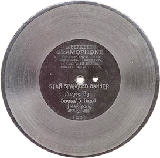1887 Nov. 8 from Emile Berliner
1887 Nov. 12 from Scrapbook
1888 May 16 from Emile Berliner
1888 May 16 from Emile Berliner
1888 Aug. 18 from Scrapbook
1894 from Emile Berliner
1895 Feb. 19 from Emile Berliner
1895 from Treasures
1895 from Emile Berliner
1896 May 16 from Scrapbook
